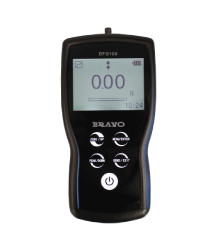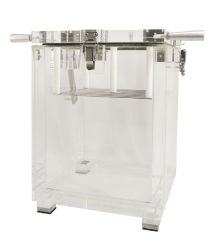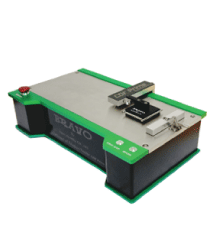iCone²⁺ Calorimeter
What It's For
- Online support and remote diagnostics add control of instruments from FTT for quick and effortless support
- Design based on cutting edge surface mounted PCB technology
- PCB modular design facilitates improved serviceability and reliability
- Improved laser mounting system for easier setup and calibration as well as the elimination of thermal drift
- Robust engineering for an improved life expectancy of the instrument
- Latest generation gas analysers with PCB and touchscreen technology
- Remote cone heater assembly positioning control so that heater-specimen surface separation can be adjusted pre- and mid-test, to facilitate testing of intumescing or thermally distorting specimens
- Programmable heat flux exposure regimes. Up to 10 consecutive heat flux ramping or holding phases can be programmed
- Motorised heat shield to protect the specimen from heat exposure before the test
- 5.5″ colour touchscreen test control panel, adjacent to specimen, supplements principal computer control
- Automatic calibration by ConeCalc Software
- Furniture (ASTM E1474)
- Wall lining materials (ASTM E1740)
- Prison mattresses (ASTM F1550)
- Electric cables (ASTM D6113)
- Railway rolling-stock applications (EN 45545-2)
- Maritime applications (IMO)
iCone mini and iCone classic Calorimeter
What It's For
- Remote cone assembly positioning control, so that heater specimen surface separation can be adjusted pre and mid test, to facilitate testing of intumescing or thermally distorting specimens
- Programmable heat flux exposure. Up to 10 consecutive heat flux ramping or holding can be programmed
- Motorised heat shield to protect specimen from heat exposure before test
- Motorised positioning and control of spark igniter to ignite the combustion gases from the specimen
- Automatic/semi-automatic/manual calibration by ConeCalc Software
Load cell resolution of 0.01g and load capacity up to 8.2kg (Sartorius cell)
Load cell mounted on an independent table to avoid any vibration from exhaust fan - Fire model protection alarm system
- Online support and remote control of instruments from FTT for internet connected system
- Optional larger Cone fire model for testing specimens with very low heat release rates. 150mm × 150mm specimens are exposed to uniform heat flux over entire surface
- Optional fully integrated FTIR gas analysis system supplied with heated sampling module, heated lines/probes and PLC controller
- ISO 5660
- ASTM E1354
- ASTM E1474
- ASTM E1740
- ASTM F1550
- ASTM D6113
- CAN ULC 135
- BS 476 Part 15
Room Corner Test
What It's For
- ISO 9705
- EN 14390
- ASTM D5424
- ASTM D5537
- ASTM E603
- ASTM E1537
- ASTM E1590
- ASTM E1822
- NFPA 265
- UL 1685
- NT FIRE 25
- NT FIRE 32
NBS Smoke Density Chamber
What's for
- Size (m): 1.90 (H) × 1.63 (L) × 0.66 (D)
- Power Supply: 110/230 V – 50/60 Hz – 16A
- Size of actual chamber: 914 mm × 914 mm × 610 mm
- BS 6401
- ASTM E662
- NFPA 258 Options : ISO 5659/IMO FTP Code Part 2
- ATS 1000.001/ABD0031
- NES 711
3 Metre Cube Smoke Density Apparatus
What's for
The 3 Metre Cube is used for measuring smoke emission when electric cables are burned under defined conditions (IEC 61034; BS 6853, BS 6724; BS 7622). An example would be a few cables burned horizontally. These units are produced to meet the specification used in many electric cable tests.
The equipment comprises of a cubic enclosure and a photometric system that can be supplied either in a self-assembly kit form or can be fully installed by FTT Engineers. The instrument is made of Zintec steel sheets and can be supplied with customised extraction facilities and all instrumentation, fans, stands and sample mounting frames. The photometric system has a horizontal optical path of 3m between two opposite faces of the cube and the attenuation of light transmitted through the chamber is measured during the test.
BS 6853
BS 6724
BS 7622
- BS 6401
- ASTM E662
- NFPA 258 Options : ISO 5659/IMO FTP Code Part 2
- ATS 1000.001/ABD0031
- NES 711
Density of Smoke from the Burning or Decomposition of Plastics
What's For
FTT Exit Sign Test Apparatus ASTM D2843 : The FTT Exit Sign Test is designed for the measurement and observation of the smoke-producing characteristis of plastics under controlled conditions of combustion or decompisition according to ASTM D2843-10 but not to be used for measuring any other characteristics of the plastic combustion.
The apparatus consists of:
- Combustion Chamber
- Specimen Holder
- Ignition System
- Photometric System
- Control Unit (incl. Smoke Meter)
White Light Smoke Measurement System
The FTT ‘Smoke Density Photometric System’ (DIN 50055) is designed to be used in conjunction with equipment that measures smoke from burning materials. The unit can be fitted to several instruments such as the Room Corner Test, (ISO 9705), Single Burning Item (SBI), (EN 13823), Heat Release Apparatus for IEC 60332 Part 3 (as developed in the FIPEC project), Steiner Tunnel or Flooring Radiant Panel (EN ISO 9239-1) etc.
The apparatus consists of:
- Light Source
- Light Measuring System
- Control Unit
Furniture & Open Calorimeters
what's for
- ISO 9705
- ASTM D5424
- ASTM D5537
- ASTM E603
- ASTM E1537
- ASTM E1590
- ASTM E1822
- NFPA 265
- UL 1685
- UL 9540a
- NT FIRE 25
- NT FIRE 32
- EN 16989
Evaluating Thermal Runway Fire Propagation
what's for
The UL 9540A standard has been developed to test battery energy storage systems in different scales :
• Cell level
• Module level
• Unit level
• Installation level
The Cell Level Test
The Module Level Test
The Unit Level Test
The testing principle from the module level test can be applied to the unit level test measuring
fires up to 10MW by increasing the hood size, exhaust diameter and exhaust flow rate, as
explained in ISO 24473, Open Calorimetry – Measurement of the rate of production of heat and
combustion products for fires up to 40MW.
The unit level test involves heating up several cells in a battery energy storage system (BESS) to initiate thermal runaway and collecting the gaseous products under a hood and exhaust system with an internal diameter of 1.524m (in order to measure heat release rates up to 10MW). A sample
of the gases in the exhaust are analysed for the concentration of oxygen, carbon dioxide, carbon
monoxide and hydrocarbons as well as the composition of additional gases using FTIR. In
addition the amount of smoke in the exhaust is measured using a white light smoke measurement
system. The environment around the BESS is instrumented in order to measure the temperature and heat flux at adjacent walls and secondary BESS systems.
The Installation Level Test
Installation level tests are only required for non-residential installations. The test configuration is similar to the Unit Level test, but does not measure the heat release and smoke production rates.
The installation level test involves heating up several cells in a battery energy storage system (BESS) to initiate thermal runaway in a room which contains a sprinkler system or other fire and explosion mitigation methods. A sample of the gases in the room is taken and analysed for the concentration of hydrocarbons and hydrogen as well as the composition of additional gases using FTIR. The environment around the BESS is instrumented in order to measure the temperature and heat flux at adjacent walls and secondary BESS systems.



